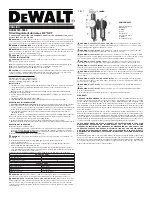
MA-K17510-KW LinerSCAN manual ISSUE P.doc
Page 67 of 93
6.9 Scuffing
Figure 11 shows an incident of scuffing seen during normal running conditions. The cause of this is
unknown but the sensor data did show it in enough time to reduce the load and increase the cylinder
lubricant feedrate to that cylinder.
Figure 11 Scuffing after normal running
6.10 Conclusions
•
LinerSCAN monitors the condition of slow speed diesel engine liners and rings.
•
Equipment which is still bedding in is more susceptible to problems caused by out of
specification parameters such as fuel with high catalyst fines.
•
Trending of cylinder wear is very important. Trending after damage events can show if
permanent damage has occurred or if the situation is improving.
•
When liners and rings are replaced together they bed in sooner than when only a rings are
replaced.
•
Regular start/stopping of the engine increases wear rates.
•
Feedrate optimisation programs and assistance from the engine manufacturer reduce cylinder
oil costs.
6.11 References
[1]
The Swedish Club Highlights – September 2005
[2]
Sørien H. Jensen Man B&W, Worldwide Independent Power June 2007
[3]
Matthias Amoser, Leo Schnellmann and Thomas Werner, Wärtsilä Switzerland Ltd, Marine News
2004
[4]
Bill Stamatopoulos, DMV Petroleum Services Grease, Marine Propulsion June/July 2007
Summary of Contents for FG-K17401-KW
Page 9: ...MA K17510 KW LinerSCAN manual ISSUE P doc Page 8 of 93 3 Installation Installation ...
Page 34: ...MA K17510 KW LinerSCAN manual ISSUE P doc Page 33 of 93 4 Commissioning Commissioning ...
Page 40: ...MA K17510 KW LinerSCAN manual ISSUE P doc Page 39 of 93 5 Operation Operation Manual ...
Page 89: ...MA K17510 KW LinerSCAN manual ISSUE P doc Page 88 of 93 ...
















































